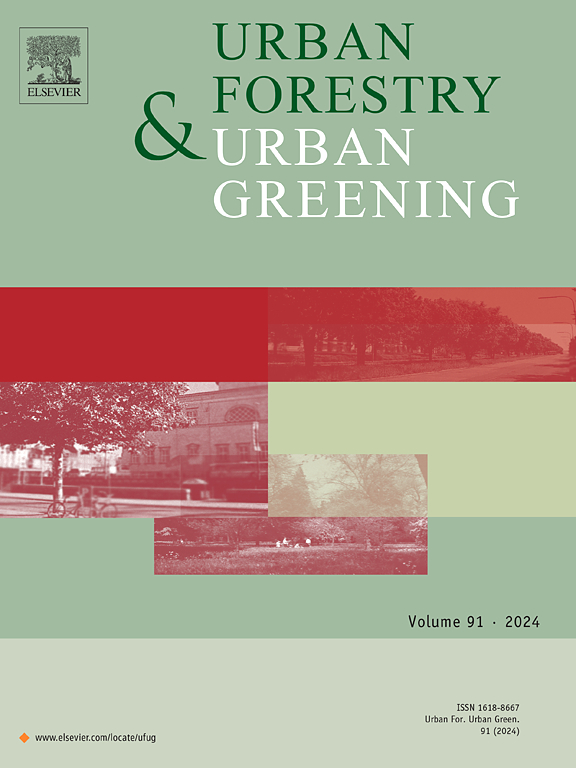评估集中式蓝绿基础设施在动态雨水储存和径流分配方面的性能
IF 6
2区 环境科学与生态学
Q1 ENVIRONMENTAL STUDIES
引用次数: 0
摘要
集中式蓝绿基础设施(CBGI)具有丰富的储水量、灵活的流域面积和多种社会生态效益,为适应气候变化提供了显著优势。然而,在区域尺度上对CBGI动态蓄流和径流分配的规划和管理还没有得到足够的重视。我们建议开发基于场景的CBGI雨水管理规划支持系统(SMPSS-CBGI)来计算和分配径流,并根据降雨事件和CBGI储存量调节贡献流域。该系统已在中国陕西枫溪新城的一个人工湖中实施。根据降雨强度、管理目标、管理活动以及土地利用和气候变化制定了12种情景。在与ArcGIS集成的CommunityViz 5.2中,采用曲线数法进行产流,通过地形分析进行CBGI存储模拟。研究结果表明,CBGI在10年反复降雨事件中成功地管理了23个排水单元的所有径流。当降雨重复率增加到50年一次时,CBGI有效调节的排水单元数量减少到23个单元中的10个。在未来极端降雨和不透水地表增加的情景中,CBGI调节了总径流量的25.7% %。建议整合额外的雨水基础设施,以适应这些预期的变化。同时,SMPSS-CBGI通过其友好的界面,可以有效地纳入利益相关者的意见和关注点,便于结果的实时更新和可视化。本文章由计算机程序翻译,如有差异,请以英文原文为准。
Assessing the performance of centralized blue-green infrastructure in dynamic stormwater storage and runoff assignment
Centralized blue-green infrastructure (CBGI) offers significant advantages for climate change adaptation due to substantial water storage, flexible drainage areas, and various social-ecological benefits. However, the planning and managing CBGI’s dynamic storage and runoff assignment at a regional scale have not received adequate attentions. We propose to develop a scenario-based Stormwater Management Planning Support System for CBGI (SMPSS-CBGI) to calculate and assign runoff, as well as regulate contributing drainage area according to rainfall events and CBGI storage. This system has been implemented in an artificial lake in the Fengxi New City, Shaanxi, China. Twelve scenarios were developed according to rainfall intensities, management objectives, managing activities, and land use and climate changes. Runoff generation using the curve number method and CBGI storage simulation through terrain analysis were conducted in CommunityViz 5.2 integrated with ArcGIS. The findings indicated that CBGI successfully managed all runoff from 23 drainage units during a 10-year recurrence rainfall event. When the rainfall recurrence increased to a 50-year event, the number of drainage units effectively regulated by CBGI reduced to 10 out of 23. In future scenarios featuring extreme rainfall and a rise in impervious surfaces, CBGI regulated 25.7 % of the total runoff. It is advisable to integrate additional stormwater infrastructure to accommodate these anticipated changes. Meanwhile, SMPSS-CBGI can effectively incorporate stakeholder opinions and concerns through its user-friendly interface, which facilitates real-time updates and visualizations of results.
求助全文
通过发布文献求助,成功后即可免费获取论文全文。
去求助
来源期刊

Urban Forestry & Urban Greening
FORESTRY-
CiteScore
11.70
自引率
12.50%
发文量
289
审稿时长
70 days
期刊介绍:
Urban Forestry and Urban Greening is a refereed, international journal aimed at presenting high-quality research with urban and peri-urban woody and non-woody vegetation and its use, planning, design, establishment and management as its main topics. Urban Forestry and Urban Greening concentrates on all tree-dominated (as joint together in the urban forest) as well as other green resources in and around urban areas, such as woodlands, public and private urban parks and gardens, urban nature areas, street tree and square plantations, botanical gardens and cemeteries.
The journal welcomes basic and applied research papers, as well as review papers and short communications. Contributions should focus on one or more of the following aspects:
-Form and functions of urban forests and other vegetation, including aspects of urban ecology.
-Policy-making, planning and design related to urban forests and other vegetation.
-Selection and establishment of tree resources and other vegetation for urban environments.
-Management of urban forests and other vegetation.
Original contributions of a high academic standard are invited from a wide range of disciplines and fields, including forestry, biology, horticulture, arboriculture, landscape ecology, pathology, soil science, hydrology, landscape architecture, landscape planning, urban planning and design, economics, sociology, environmental psychology, public health, and education.
 求助内容:
求助内容: 应助结果提醒方式:
应助结果提醒方式:


